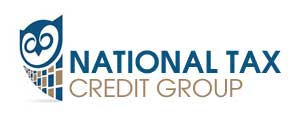You have been Audited by IRS, Now What?
The IRS’s recently released Fiscal Year (FY) 2011 Enforcement and Service Results, show some interesting trends in its audit activity. For example, face-to-face audits of individual taxpayers reporting income over $200,000 increased by 34 percent as compared with FY 2010, from 58,521 to 78,392. Also, the IRS is now auditing about one out of every eight taxpayers who reported over $1 million in income.
Overall, with 140,837,499 individual income tax returns filed in the 2010 calendar year, the IRS conducted and closed a total of 1,564,690 audits in FY 2011, for a “coverage” rate of 1.11 percent. This is about the same coverage rate as in the previous fiscal year, but as noted above, the IRS is increasingly focusing its face-to-face audit resources on more affluent individual taxpayers. (I’ll explore the impact of the IRS‟s conducting 78 percent of individual audits by correspondence – as opposed to face-to-face – in future
postings.)
These statistics, however, only tell a small fraction of the story about the IRS’s compliance contacts with individual taxpayers. As reported in the recently released National Taxpayer Advocate’s 2011 Annual Report to Congress, the IRS not only conducted 1.6 million audits of individual taxpayers in FY 2010; it also reached out and touched an additional 13.5 million individual taxpayers during that year in a way that often felt like audits to the taxpayers impacted, even if the IRS doesn‟t technically classify all those contacts as “audits.”
These non-audit “touches” focus on a very different group of taxpayers in terms of income level. More importantly, non-audit audits (let’s call them “unreal” audits, as opposed to the ones the IRS considers “real”) do not trigger very important taxpayer protections enacted by Congress over the years to ensure that taxpayers are treated fairly in examinations.
Now, a word about IRS numbers. For this blog posting, I asked my research staff to give me a breakdown of FY 2010 “real” and “unreal” audits by income level. To do that, they used the IRS Compliance Data Warehouse, an internal IRS research database that houses taxpayer account information by tax year. The numbers in our breakdown do not exactly mesh with what the IRS reports in its Statistics of Income Data Book. In part, this is because we counted each taxpayer only once. So, for example, the IRS conducted 1.6 million individual audits in FY 2010, but the audits affected only 1.4 million taxpayers; some taxpayers may have been audited for more than one year. Similarly, if a taxpayer was touched by more than one program, we count him or her in just one of the programs, with the order of preference for counting purposes as Examination, Automated Substitute for Return, Automated Underreporter, and Math Error. (I’ll explain these terms below.)
Two more notes on the data. First, for the discussion and table below, we excluded 4.6 million math error notices that the IRS says related to the Making Work Pay credit. The IRS says these notices advised taxpayers who had failed to claim the credit that they were entitled to it. Although we haven’t verified this statement, we agree that if true, giving taxpayers a refund wouldn’t feel like an audit to the taxpayer and therefore should not be included in our totals.
Second, our income breakdown in the chart below is based on each taxpayer’s self-reported Adjusted Gross Income. Because the ASFR program generates returns for taxpayers who have not filed returns on their own, we do not have an AGI breakdown for Automated Substitute for Returns (ASFRs). Therefore, ASFR amounts are listed only in the “Total” row at the bottom and are not included in the column labeled “Combined” or in the percentages in the final column (except for the grand total).
Now to the results. In addition to conducting “real” audits of 1.4 million individual taxpayers in FY 2010, the IRS conducted “unreal” audits of 9.2 million individual taxpayers as follows:
- 3,911,005 Automated Underreporter (AUR) cases, in which the IRS matches income reported by the taxpayer on his or her return with income reported to the IRS by third-party payers;
- 4,740,909 math error notices, in which the IRS corrects and assesses mathematical or other inconsistent entries on a return before the taxpayer has a chance to contest the change; and
- 563,927 Automated Substitute for Returns (ASFRs), in which the IRS creates a substitute return for a nonfiler based on third-party payer information.
As the chart below indicates, the combined impact of “real” and “unreal” audits in terms of coverage by income segment is very different from that of “real” audits alone.

Although the “real” audit coverage rate for individual taxpayers with incomes below $100,000 is about 1 percent, the combined coverage rate balloons to 6.9 percent, an increase of over 600 percent, when we include “unreal” audits in the mix. For individual taxpayers reporting incomes between $100,000 and $200,000, the FY 2010 “real” audit coverage rate is 0.6 percent, but when we include the “unreal” audit contacts, the coverage rate rises to 7.3 percent – an increase of about 1,100 percent. Including “unreal” audits also increases the coverage rate of the wealthiest taxpayers – those reporting incomes over $10 million – from 13.1 percent to 21.4 percent. (And these totals understate the total number of “unreal” audits because the percentages within income categories don’t include ASFRs and because there are a few additional programs that adjust taxpayer liabilities, including some flagged by the Electronic Fraud Detection System, that we have not addressed here.)
Now, why does all this matter? First, because understating the coverage rate actually masks how much work the IRS is doing. Second, and more significantly, because the type of contact – whether it’s a “real” or “unreal” audit – makes a difference in the rights afforded taxpayers and also in the halo, or indirect, compliance impact of that contact. For now, I’ll focus on the taxpayer rights impact and discuss the halo effect in later postings.
The tax law grants the IRS the authority to examine any books, papers, records, or other data that may be relevant to ascertain the correctness of any return. (See IRC § 7602(a)(1).) The IRS has taken the position that an attempt to resolve a discrepancy between the taxpayer’s return and data available from a third party does not constitute an examination because the IRS is not examining books or records but merely asking the taxpayer to explain the discrepancy. (See Rev. Proc. 2005-32, § 4.03, 2005-1 C.B. 1206.)
When the IRS doesn’t classify these tax adjustments as audits, the IRS doesn’t trigger the taxpayer’s right to avoid unnecessary examinations. (See IRC § 7605(b).) This position enables the IRS to later conduct a “real” audit of a taxpayer who already has been subjected to an “unreal” audit of the same return.
From the IRS‟s perspective, it is important to preserve its ability to conduct “real” audits because these “unreal” audits typically focus on limited issues such as an omitted income item. But from the taxpayer’s perspective, being contacted by the IRS more than once about one year’s return can feel like… well… at least one time too many.
This distinction takes on added significance when we consider that the overwhelming majority of taxpayers who are subject to “unreal” audits are low income or middle class, and these taxpayers are least able to afford representation in resolving their disputes. They may not even know when their rights are being violated.
In addition, the IRS is likely to start conducting “unreal” audits of business taxpayers, including self- employed individuals, by matching income reported on tax returns against third-party reports of gross receipts submitted by issuers of credit and debit cards. (See IRC § 6050W.) Any resolution of mismatches will most assuredly require the IRS to review the taxpayer’s books and records. Yet because the IRS doesn’t consider these Automated Underreporter contacts to be “real” audits, the IRS will retain the right to conduct a second review of the taxpayer’s books and records for the same tax year. I cannot believe that Congress, in enacting the protections of IRC § 7605(b), contemplated this result.
In our 2011 Annual Report, we recommended the IRS should, “[i]n light of the information available in the 21st century, review and reassess the audit processes deemed „not an examination‟ and instead use the audit process to protect taxpayer rights, increase compliance, and preserve IRS credibility.” To buttress that recommendation, I issued a Taxpayer Advocate Directive to several key IRS officials during the same week we released our report, directing them, among other things, to conduct a comprehensive review of “unreal” audits and revise the definition of what constitutes an audit to address my concerns about taxpayer rights. These officials can implement my directive or appeal it to the Commissioner or Deputy Commissioner, who have the authority to overturn it. We’ll let you know if we make any progress.
Posted in: Uncategorized
Leave a Comment (0) →
